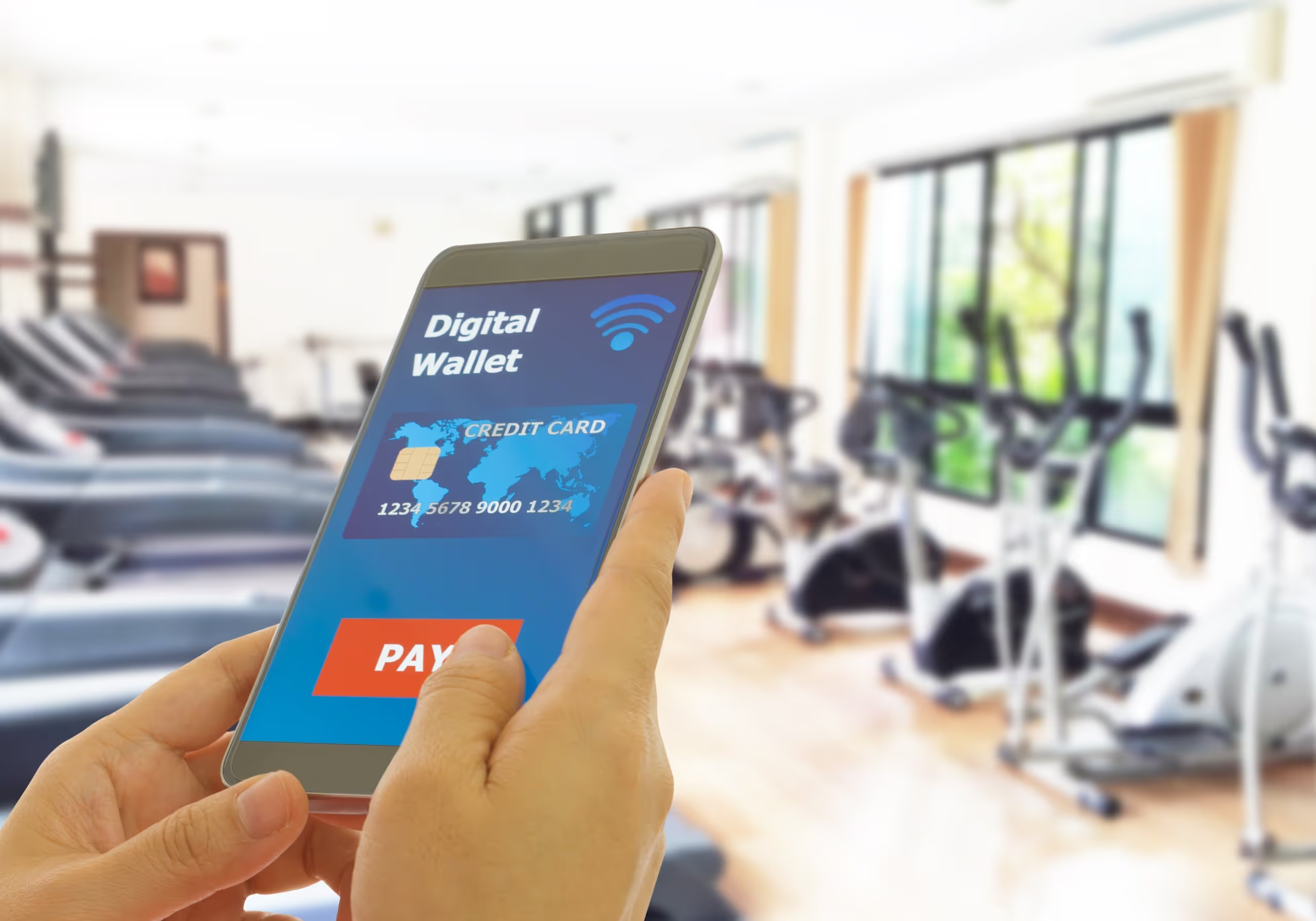Real estate agents deal with hundreds of tasks throughout the property buying and selling process. They have costs to market themselves, improve properties, pay a variety of fees, and split the commission.
By the time a property closes, there are dozens of transactions related to the realtor and their clients. This can be an accounting nightmare if you don’t have a clear system in place.
Fortunately, you don’t need an accounting background to be successful in real estate—but you should have a general understanding to help you make the best strategic decisions for your real estate business.
Keep reading to learn more about real estate accounting. Even if you’re just starting out, you can create processes that help you to scale—and to keep as much commission as you can.
What is real estate accounting?
Real estate accounting is a specialized branch of accounting that focuses on managing the financial transactions related to a real estate business. This includes tracking income from property sales or rentals, expenses such as maintenance costs, commission payouts, and property improvements, and any other transactions related to real estate activities.
A comprehensive real estate accounting system not only ensures compliance with tax and financial regulations, but also helps realtors make informed decisions to improve their profitability and growth. Whether you're a solo agent, a property manager, or a large real estate firm, understanding the basics of real estate accounting is integral to your financial success.
Why real estate accounting is important.
Understanding the importance of real estate accounting is crucial if you want to maintain financial health and propel your business forward. It not only helps track performance, but also aids in strategic planning and decision-making.
- Transparency - Real estate accounting gives a clear and transparent view of your financial situation, allowing you to understand your income, expenses, and profitability at a glance.
- Compliance - Real estate accounting ensures compliance with tax laws and financial regulations, preventing you from facing penalties or legal issues.
- Decision making - Real estate accounting aids in strategic decision making by providing vital financial data, facilitating operational improvements and expansion plans.
- Cash flow management - Real estate accounting helps in effective cash flow management, which is critical for the smooth operation of any real estate business.
- Cost management - With proper real estate accounting, you can identify areas of excessive spending and implement cost-saving measures.
- Investor confidence - Accurate and up-to-date accounting can increase investor confidence, which can be crucial if you're seeking external funding or partnerships.
- Profit maximization - Real estate accounting enables you to track and control your expenses, allowing for better budgeting and ultimately maximizing your profits.
Real estate accounting is an invaluable tool for anyone involved in the real estate industry. Its ability to provide a clear financial picture facilitates strategic planning, regulatory compliance, and ultimately, business growth. Ignoring its importance can lead to disorganization, legal issues, and missed opportunities for profit maximization.
Elements of real estate accounting.
Real estate accounting comprises several key elements that work together to provide a full picture of your business’ financial health.
- Revenue tracking - This includes all income generated from property sales, rentals, or other services offered. It's crucial to accurately record all revenue transactions to have a clear view of your business’ profitability.
- Expense management - These are costs incurred in the running of the business. They include maintenance costs, commission payouts, marketing expenses, and property improvements. Proper management of expenses helps to identify areas where costs can be reduced to increase profitability.
- Financial reporting - Regular financial reports help realtors monitor the business’ financial performance over a specific period. These reports include profit and loss statements, balance sheets, and cash flow statements.
- Tax preparation - A substantial part of real estate accounting involves managing tax-related matters. This includes determining taxable income, identifying tax deductions, and ensuring timely tax payments to avoid penalties.
- Budgeting and forecasting - This involves making financial projections for the future, based on past and current financial data. Budgeting and forecasting are essential for strategic planning and decision-making.
Understanding these elements of real estate accounting can help you navigate the financial landscape of your business, ensuring that you are making informed decisions to drive growth and profitability.
Real estate accounting basic steps.
The financial backbone of a real estate business revolves around effective accounting practices. These practices maintain the flow of funds, enabling the business to thrive even in fluctuating markets. Even though real estate accounting might seem intricate, a clear understanding of the basic steps can simplify the process dramatically.
Let's delve into the core steps of real estate accounting that can effectively manage your financial transactions and provide a clear picture of your business' financial health, regardless of the size of your real estate portfolio.
1. Choose an accounting method.
You can choose between cash-based and accrual-based accounting to track your expenses and income.
With cash-based accounting, you record income only when the cash hits your account. You also only record expenses when your business is billed for them. With this model, you can see clearly how much money you have within your organization.
With accrual-based accounting, you record income and expenses when they occur, not when money exchanges hands. For example, you can record the costs to stage a home, even if you don’t pay the stager until the following month. Accrual-based accounting is a better option if you want more visibility into the finances of your business, including future expenses and revenue streams.
However, many realtors prefer to use cash-based accounting for their firms. First, most expenses related to real estate are immediate. If you need to hire a photographer, you can cut a check for their services or request an invoice immediately. Because there isn’t a delay between the service and payment, the cash-based model works.
Many realtors also prefer the cash model because of their income sources. Sales fall through, contracts are renegotiated, and renters cancel their leases. All of these changes can harm your cash flow, especially if you already recorded the income through your accrual-based system. With a cash model, you can record the income when the sale closes or when the renter’s check hits your account. The payment is a sure thing—and the money is yours to spend.
Every business model is different, so consider your specific needs before selecting an accounting process.
2. Separate personal and business funds.
Blurring the lines between personal and business funds can lead to complicated tax issues and potential financial confusion. For transparency and accuracy, it is essential to set up separate bank accounts for your personal finances and your business transactions. This allows you to clearly track your real estate-related income and expenses separately from your personal expenses. Remember, mingling personal and business funds can raise red flags during audits and may impact your ability to accurately analyze your business’ financial performance. Keeping these funds separate is a best practice in real estate accounting that contributes to the overall financial health and integrity of your business.
3. Categorize your expenses and income.
Clear organization is the foundation of good bookkeeping. As your real estate business grows, you’ll need healthy bookkeeping habits to forecast growth and understand your financial opportunities. Consider a few of the different types of expenses that come with operating a real estate business, along with the different sources of income you can expect.
Expenses
- Realtor association fees
- Commission fees
- Marketing costs
- Administrative assistant services
- Staging expenses
- Photography and video costs for homes
- Gas and wear on your car
Income
- Commissions earned
- Commissions from realtors you add to your team
- Rental income or sales income from investment properties
- Property management fees (if applicable)
With growth comes complexity. You may bring on an assistant or purchase an investment property to flip for a profit. To prevent confusion, establish clear accounting codes related to your business. Each purchase will have a category and a code number associated with it.
If your real estate business has multiple arms (like an agent arm and an investment property arm), you may want to consider establishing multiple LLCs or keeping the books for each business channel separate. This delineation can prevent confusion, while helping you to manage each aspect of your business individually.
4. Understand your commission model.
If you’re working with a real estate brokerage to build up your business and brand name, make sure you have a clear idea of your commission fees and opportunities. Each brokerage charges its own commission structure and creates opportunities for real estate agents to negotiate their percentages, signing bonuses, and other earnings.
Consider the commission systems of a few of the largest real estate brokerages in the country:
- Keller Williams - This brokerage offers a 70/30 split with agents, where the brokerage takes a 30% cut of your commission. However, agents also pay a 6% franchise fee on their sales (up to $3,000). This means you actually have a 64/30/6 split until you pay $3,000 in fees. Additionally, each Keller Williams office has its own commission cap (typically around $28,000). Once you hit that cap in commission fees, you take home 100% of your commissions.
- RE/MAX - This company has multiple commission plans that you can choose from. First, they have a 95/5 plan where realtors take home 95% of their commissions, but pay a 5% desk fee each month. With this option, there’s no commission cap. Realtors at RE/MAX can also opt for a commission split range of 60/40 to 80/20 depending on their previous sales. Once they hit their commission cap, they move up to the 95/5 model.
If you’re still deciding which brokerage to work for, consider their commission structure and their brand name in your area. You may be able to earn more money by working for a specific firm—even if you pay them more commission than with another option.
A large part of real estate accounting is tracking what you earn in commissions and the fees you’re expected to pay over the course of the year. These numbers determine your take-home pay and your budget for marketing expenses and other investments.
5. Establish your operating costs.
The finances of a real estate professional can fluctuate significantly over the course of a year. You may experience a high number of expenses at the start of the year and then close multiple sales within a few weeks. This means that realtors need to balance their expenses so that they always have enough funds in the bank to cover basic expenses, regardless of the market.
As you establish your accounting systems, start with your operating costs. Operating expenses (OPEX) are costs that aren’t directly tied to your services. They differ from your cost of goods sold (COGS), which are costs directly related to your services.
For example, if you keep a marketing agency on a monthly retainer to maintain your real estate website, you will factor this expense into your OPEX. It doesn’t matter whether you sell a dozen houses this quarter or none—you’ll still need to pay the flat marketing fee. Additional OPEX listings include rent, a lease on a work vehicle, and utilities like internet fees or your electric bill.
Meanwhile, if you hire a photographer to help you market a house on a per-property basis, their services are part of your COGS. If 10 new listings are added within a month and you need to photograph each of their homes, then your photography expenses will be higher than if you have only two clients another month.
With the uncertain nature of the real estate business, you can use your OPEX to identify predictable costs related to your company. Your electric bill might fluctuate and gas prices might drive up your monthly bills, but you can anticipate costs related to those operating expenses every single month, regardless of your business.
6. Track all of your business expenses.
Once you have your operating costs sorted in your accounting system, you can take steps to track all of your business expenses.
Real estate agents have some of the most diverse expenses in business. They face costs ranging from landscaping services that improve curb appeal to lunches for clients and gifts for buyers. Realtors’ expenses can reach a few hundred dollars a month or into the thousands, depending on their listings, marketing strategies, and many other factors. Real estate agents also accrue these business expenses daily—which means you can easily get overwhelmed if you don’t have a system in place.
There are a few ways to keep your expenses in order as your real estate business grows. The first step is to get a business credit card. This card will separate your business expenses from your personal charges, while keeping your monthly costs all in one place. You can also get a business bank account to isolate your business transactions.
The next step is to look for software that can record your business expenses. With tools like BizXpense Tracker, you can upload receipts and track costs related to certain projects—even if you have to use your personal card. You can also download a gas mileage tracker to log how far your drive. This information will be essential when separating personal and professional gas costs, insurance payments, wear and tear, etc.
If you set aside a few minutes each day (or an hour or two weekly) to evaluate your charges and business expenses, you can keep your accounts clearly organized. This practice prevents an end-of-month scramble to reconcile your business costs with your bank account balance.
7. Set up double-entry accounting.
Regardless of whether you choose the cash or accrual model for your real estate bookkeeping, you’ll want to establish a double-entry system for your accounting materials.
A double-entry system is based on the idea that every credit has an equal and opposite debit. In accounting, a debit increases the value of accounts (a positive number) while a credit decreases the value of accounts (a negative number).
For example, let’s say you order business cards and other giveaways to market your business. These cost $500. With a double-entry bookkeeping system, you’ll credit your cash account $500, because that is how much you paid while debiting your marketing assets $500—because you now own cards, magnets, koozies, and other fun items.
The purchase of marketing materials is a simple example, but double-entry accounting also becomes valuable when you start adding assets to your real estate firm. For example, you can purchase a house to flip for $200,000. You now have $200,000 less in cash, but a significant asset worth that amount. If you flip the house for $350,000, then you can track your profits using the expense accounts in your double-entry recordings.
Double-entry bookkeeping also provides a series of checks to ensure that each entry is correct. If the two lines of credits and debits don’t align, then something was recorded incorrectly. While it might not seem like a big deal if you mistype your electric bill or are off a few dollars on your commission income, these errors can add up—and might affect your taxes and cash flow. Plus, you will have to return to your books and redo them to ensure that they’re error-free.
If double-entry accounting seems intimidating, keep in mind that many online systems will fill in the backup entry for you. Your accounting system will ask for a copy of the invoice and the expense category, then do the rest.
8. Reconcile your accounts.
Reconciliation is a crucial part of accounting that ensures all the transactions in your books accurately reflect the transactions in your bank statement. The process involves comparing your internal financial records against the monthly statements issued by your banks and credit card companies to check for discrepancies.
To execute this process, you should start by making sure the beginning balance of your records matches the beginning balance on your bank statement. Now, compare each individual transaction: the date, the recipient, and the amount. If you detect any discrepancies, such as missing transactions, double entries, or discrepancies in amounts, flag them immediately and investigate.
Remember, reconciliation should be performed regularly, preferably on a monthly basis. This is not just a good practice for keeping your books clean, but it's also an effective way to detect any potential fraud or errors early.
If you opt for financial software, most modern systems have an automatic reconciliation feature that simplifies this process. However, it's essential to understand the process and check the reconciliation report to ensure accuracy.
Remember, accurate bookkeeping is not just about compliance—it also gives you a clear picture of your financial health, thus aiding strategic planning and decision making.
9. Evaluate your performance monthly.
The purpose of bookkeeping in real estate provides two benefits: improving your future performance and forecasting your upcoming costs and income. In both cases, you’ll want to evaluate your accounts monthly to make sure your business is operating at its best.
First, review your expenses and income to understand your profit margins. For example, if you bought a property for $200,000 and sold it for $300,000, it looks like you made a nice profit. However, if you spent 12 months and $90,000 on renovations and marketing, then your $10,000 profit doesn’t seem as impressive.
Evaluating your profit margins can help you to understand how much money you really make on the sale of homes and renovations of properties. You may decide to adjust your fees or focus more on investment rentals in order to grow your profits.
Next, forecast your income and expenses for the future. This exercise isn’t always easy in the real estate field. Take your static expenses and OPEX estimates to get an idea of what you can expect to pay in the next few months. You can also use your pending listings to estimate your commissions and income. Depending on the market, you can also create forecasts for your COGS based on your average monthly leads.
Your forecast numbers aren’t meant to be exact figures. However, they serve as informed estimates on your future income and costs. These forecasts can help you understand whether the coming months will be ideal for making major investment purchases or if you’ll need to seek temporary funding sources to cover upcoming costs.
10. Organize your documents.
It's essential to maintain an organized record of your real estate business transactions, contracts, and other related documents. This includes documents related to property purchases, sales, rental agreements, and invoices for any expenses incurred.
Digitizing your documents can be highly beneficial, as it provides easy access, reduces the risk of loss, and allows for efficient categorization. Utilize document management software or cloud storage solutions for an organized, searchable collection of your important business documents. Regularly backing up these digital files can help prevent data loss.
Remember, a well-organized document system not only simplifies your business operations, but also streamlines the auditing process and ensures you comply with tax regulations.
11. Prepare early for tax season.
You can benefit from healthy accounting practices throughout the year, but one of the main time-savers for your real estate firm is having your books in order for tax season. There are multiple reasons why your taxes may be more complicated as a real estate professional:
- You will have to sort your business and personal expenses into two separate categories and may need to file taxes for both your business and personal arenas depending on your company’s structure.
- You will have multiple sources of income as you diversify your revenue streams. You’ll need to account for your commissions, any rental fees, and any profits from the sale of renovated houses that you flipped.
- You will need to record your deductions and relevant business expenses.
- You may have to pay real estate taxes on any properties you own during the renovation process. Buying and selling homes as a business can make your taxes more complicated.
If your business expenses aren’t clearly recorded and labeled, you may miss out on a significant amount of deductible income. If you lack clear balance sheets and P&L statements, it may take longer to file your business taxes. Good accounting habits can make the tax process easier and faster—while also optimizing your tax deductions.
If you want to streamline your tax filing, start reviewing your books in the fall. Make sure all expenses and sources of income are clearly recorded. Pull your receipts and relevant sales documents. Review your income statements. When your CPA or tax-prep service requests this information, you’ll already have it on hand.
Real estate accounting best practices.
Embracing accounting best practices can streamline your operations and simplify the financial management of your real estate business. Here are a few strategies to consider:
- Utilize real estate specific accounting software - Investing in a real estate-specific accounting software can automate your bookkeeping, making it easier for you to monitor income, expenses, and cash flow. It can also simplify your tax preparation and ensure your financial reports are accurate and up to date.
- Hire a professional accountant - If your budget allows, consider hiring a professional accountant who specializes in real estate. They’ll be able to navigate the unique financial challenges of the industry and can offer expert advice to optimize your financial management.
- Keep personal and business expenses separate - Always maintain a clear separation between your personal and business expenses. This not only simplifies your bookkeeping, but also ensures compliance during tax season.
- Regularly monitor your cash flow - Cash flow is crucial in the real estate business. Regularly monitor your income and expenses to avoid cash flow issues. This will help you make informed decisions about your business and can prevent financial difficulties down the line.
- Maintain accurate and timely records - Be diligent about recording all income, expenses, and financial transactions as they occur. This makes it easier to prepare accurate financial reports and will be invaluable come tax season.
Remember, effective real estate accounting isn't just about keeping books for tax purposes—it's about using financial information as a tool for strategic planning and decision-making in your business.
Common real estate accounting mistakes.
While handling the accounting side of real estate business, it's quite common to make a few slip-ups. Being aware of these mistakes can better equip you to avoid them. Here's a brief outline of the most common ones:
- Neglecting regular bookkeeping - Delaying or neglecting to update your books regularly can lead to inaccuracies and missed deductions, which can significantly impact your bottom line. Try to develop a habit of regular bookkeeping to maintain accurate and up-to-date records.
- Mixing personal and business expenses - It's crucial to keep your personal and business expenses separate. Mixing these can create confusion, make your bookkeeping more complicated, and potentially result in inaccurate tax filings.
- Inadequate record-keeping - Not maintaining comprehensive and accurate records of all transactions can lead to serious issues during tax filing or an audit. These records should include receipts, invoices, and cash flow statements.
- Not utilizing real estate specific accounting software - Real estate-specific accounting software can streamline your accounting process and significantly reduce the chances of errors. Choosing to do everything manually or using non-specialized software can increase your workload and the likelihood of mistakes.
- Failing to plan for taxes - Real estate professionals often overlook the importance of planning for tax season. Not setting aside funds for tax payments or failing to prepare your books in advance can lead to a frantic scramble during tax season.
- Neglecting to reconcile books with bank statements - Failing to regularly compare your bookkeeping records with your bank statements can mean missed discrepancies, leading to potential errors or fraud going unnoticed.
Remember, avoiding these common mistakes can save you from future headaches and ensure your real estate business runs smoothly and efficiently.
Streamlining your real estate accounting process is crucial not just for tax compliance, but also for accurately gauging the financial health of your business and making informed strategic decisions. Regular bookkeeping, vigilant record-keeping, and the use of industry-specific accounting software can greatly simplify this process and minimize the likelihood of errors.
Consider professional help if your budget allows fo it, and always keep business and personal expenses distinct. Remember, good accounting practices are not just about keeping the IRS satisfied—they provide valuable insights into your business, helping you strategize and grow. Avoiding common mistakes and implementing best practices in your accounting can set your real estate business up for lasting success.
















































